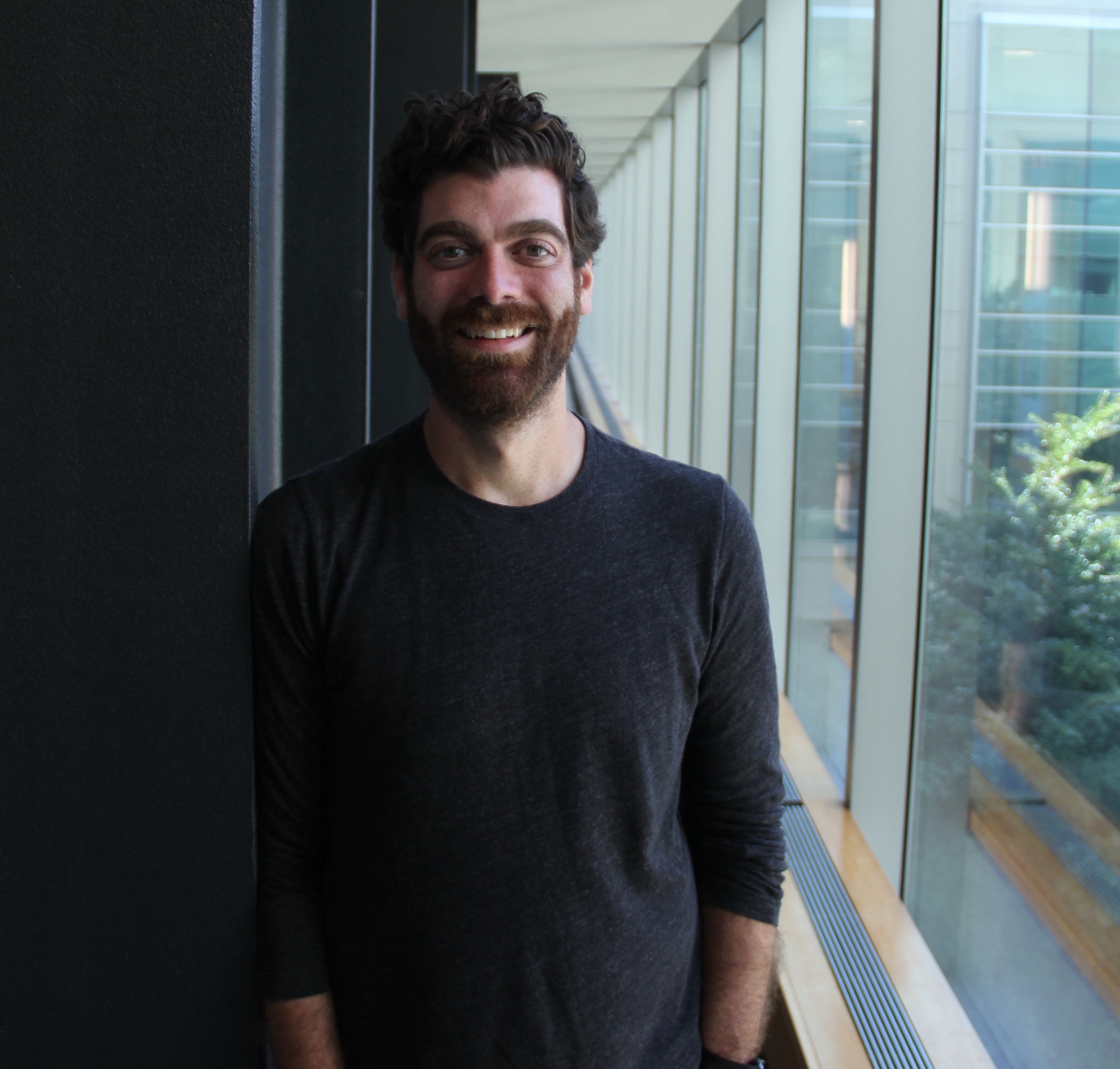Alumni Spotlight on Ian Wolff
The best way to buffer against the stress and frustration of science is to do your best to develop a rich non-science life.
Ian Wolff, PhD
Ian Wolff, PhD, is CRS alum and a former PhD student in Dr. Sadie Wignall's lab. He is currently a postdoctoral fellow in Dr. Paula's Cohen's lab at Cornell University.

Thesis Mentor: Sadie Wignall, PhD
Thesis title: "Mechanisms of Acentrosomal Spindle Assembly and Maintenance in C. elegans Oocytes"
What is your connection to the CRS community (mentor and position) and what is your current position?
I was a graduate student in Dr. Sadie Wignall’s lab up on the Evanston campus. Currently, I am a postdoctoral fellow in the lab of Dr. Paula Cohen at Cornell University in Ithaca, New York.
Could you describe your current research/studies?
I have switched from worm oocytes to mammalian spermatocytes for my postdoc. I am broadly interested in how the meiotic cell cycle is controlled during spermatogenesis, and more specifically, how completion of key events during meiosis are coupled to biochemical changes in cell cycle machinery that regulate meiotic progression. To get at this larger question, I am currently focused on a conserved ubiquitin ligase complex that is essential for progression from the entry of spermatogonia into meiosis all the way through to the meiotic divisions in the spermatocyte. It is not known how this complex is regulated, how it senses cues from the meiotic machinery to progress to the next stage of spermatogenesis, or how it chooses its stage-specific targets for ubiquitination.
What aspect(s) of CRS did you find most valuable?
Coming from a biochemistry and cell biology background, CRS opened the world of mammalian reproductive biology to me. Although some lab mates worked on mice (I was not this brave), most of the lab worked solely with worms or in vitro, so if we weren’t careful, it was easy to forget about the broader translational aspects of our work. The weekly Reproductive Research Updates were a necessary reminder of the larger picture. I always did my best to attend (not only because of the free lunch!) even if I wasn’t familiar with the topic, just to get a taste of what exciting work was being done in mammals. I credit these seminars, as well as the mouse work being done in the Wignall lab, for sparking my interest in mammalian reproductive biology, which ultimately led to the work I am doing today.
What has been the most valuable aspect to your training as a reproductive scientist in CRS?
Like I mentioned, the weekly Reproductive Research Updates were extremely valuable in my hopes of being a well-rounded reproductive biologist. It was beneficial to attend Updates to learn from others, but it was perhaps even more valuable to present my own work and get feedback from the larger CRS community. Those who weren’t thinking about worms or biochemistry constantly gave fantastic feedback- the kind that only someone with a fresh perspective can.
What would you recommend to junior scientists in order for them succeed in their scientific careers?
Graduate school is a marathon- you’ll have highs and lows. The best way to buffer against the stress and frustration of science is to do your best to develop a rich non-science life. Whether it is because of the “trainee” label, or because of the low stipend, or because of the overwork culture in academia, there is a tendency to want to “defer” life till after graduation. Be mindful and push against this! Spend time with your friends, partner, PlayStations- whatever gets your mind off science and on to something else, something that will bring you joy even if your mouse mutant is a dud. Finding a balance between professional productivity and personal enrichment will help you weather the inevitable frustrations of your scientific career.
What do you think will be the next big contribution in the reproductive biology field?
The development and use of big ‘omics to investigate specific cell types within the testis or ovary have huge potential to change the way we think about gametogenesis- in particular, how the biochemistry of cells change as they progress through these tissues. It’s often difficult or impossible to isolate certain cell types (or substages, in the case of meiosis) for genomic or proteomic analysis. Spatial transcriptomics and spatial proteomics have the potential to solve this problem, to define the gene and protein expression profiles of individual cells within a tissue.
Do you have any notable stories from your time in CRS?
I was lucky enough to receive a Constance Campbell Travel Award in 2018 to help fund my travel to a conference in Germany. The conference was fantastic, it was on the topic of microtubules and it was amazing to talk to so many people who had such deep interest in this one filament. However, the annual CRS Summit (a day-long conference) was scheduled for the day after I returned to Chicago, and in my string of fortunate luck I was also chosen to give a short talk at the meeting. Some people adjust well to jetlag- they get off the plane, have a good rest, and are bright and chipper the next day. I am not one of these people. So there I was, on a few hours of sleep and still incredibly jetlagged and even more incredibly caffeine, giving a probably far too excited 8 minute talk on my thesis project. I must have done alright, because - unbeknownst to me at the time - my future PI, Paula Cohen, was the keynote speaker of the conference and was in the audience. Looking back, that Summit ended up setting the course of my career, and it all happened in a caffeine-fueled, jetlagged whirlwind. I suppose there’s a metaphor for graduate school in there somewhere.